Anyone Have Soil Nutrient Test for Pure Bark Soil?
westes Zone 9b California SF Bay
3 years ago
Featured Answer
Sort by:Oldest
Comments (75)
westes Zone 9b California SF Bay
3 years agoRelated Discussions
Anyone using bark-only soil mixes?
Comments (13)Jane: Thanks for the message. Last year I noticed that Timberline brand of mulch in my area but I have not see it anywhere this year. I made two trips to my local Walmart but both times they had no pine bark at all, but a thousand bags of cedar chip mulch however. Your mix sounds good and very glad to hear it works for you and your plants. As long as they are happy, that's all that really matters. The fine line in these soil mixes is finding one that allows good moisture retention for roots without allowing standing water in the bottom of the container. Sounds like your mix of bark, perlite and potting soil drains very well. I have friends who use straight MG Potting soil each year, sometimes even using the "moisture control formula", then water their containers daily, regardless of soil conditions, and wonder why the leaves of their veggie plants always turn yellow by mid-summer. Of course by that time the bottom half of the container is nothing but a soggy mess, like a bog or swamp. Thanks. TYG...See Morepure sand for soil
Comments (44)Paula: Are you sure you actually need the pH to come down? I may be forgetting something from earlier in the thread about what you're growing. Compost will tend to bring pH toward neutral so if yours is a bit over 7 it should bring it down a bit. Unless you know it's seriously too high for the plants, don't worry about it. We seem to have three opinions on gypsum and pH expressed in this thread: it increases pH, decreases pH or has no effect on pH. Let me reiterate that chemically, calcium sulfate alone has a netural pH. Soil, of course, is a complex system and all the ions floating around together in the soil pore water (and sorbed to surfaces) will interact in complex ways when the system is perturbed. Apparently in certain soils, the net result can be an increase or decrease in pH as the gypsum reacts with the various soluble salts and the soil itself. Generally it should be assumed to be neutral unless you have very specific situations with your soil....See MoreHave any of you used a Pool Kit to test your Soil PH?
Comments (12)RyanStorm- Now I know how you got your 7.0 pH result. Sorry to say, but you wasted 10 bucks. That meter will never give accurate results. I have read dozens of people over the years who were mislead by those pieces of carp. It doesn't matter who is the manufacturer. ( I've tested them myself, and they are way off.) And wasted a lot more than 10 bucks making mistakes amending their soil and planting the wrong plants. There ought to be a law.... I was highly suspect of 7.0, just thought you had an accurate test done. Most of the state of Utah has soils with a pH of 7.8 or more. If you want accurate results, send a sample to a lab or two. To the Rest of Tree Peeps- I have tried the pool thingy and it was actually quite accurate, using distilled water. However, I'm not here to endorse them. But they are a much better tool than the probe meters. Like my hero, Ronaldus Magnus, said, "trust, but verify", which is also the case with pool pH meters. And they're cheap. Measuring the pH of a soil is in actuality, measuring the pH of the water in the soil, not the soil itself. M...See MoreWhere do you have your Soil Tested
Comments (24)First, GMO's (or GEO's if you prefer) have NOTHING to do with soil amendments or fertilizers so let's just leave them out of the discussion. They are not pertinent and as they are so misunderstood by the general public (see above), any discussion here will only confuse the soil testing issue further. And let's also be careful not to get hung up on terminology. It is pretty unusual to encounter a "dead" soil - depleted, yes....dead, no. A dead soil is one where nothing grows. Nothing!! Heavily cropped agricultural soils are often depleted - lacking an appropriately populous and diverse soil biology, nutrient deficient and lacking in OM - but are rarely dead. And it is not just the application of synthetic/manufactured fertilizers that are to blame but also the frequent tilling and the lack of replenishment of organic matter. And allowing the soils to remain fallow periodically, so that rainfall leaches any lingering nutrients. btw, fertilizer companies are not in the business of doing soil tests. ANY reputable soil testing lab will make recommendations for nutrient adjustments based on your soil test - it is up to the gardener how and with what one addresses those adjustments: smaller quantities of fast acting, easy to access and relatively inexpensive synthetic ferts and amendments or significantly larger quantities of more expensive, slower acting organic inputs. FWIW, it is quite possible to maintain a healthy soil environment while using synthetic ferts. Just do not apply unless necessary and do not apply more than is necessary. And replenish OM by routine mulching at the very least. And the exact same advice is given when using organic ferts - apply only when necessary and do not apply more than is necessary. Over-application of even organically sourced fertilizers can create imbalances and wreak havoc with the soil biology as well. After more than 30 years of teaching soils classes and advising and consulting on home gardening issues, I can state with some assurance that annual or routine soil tests are seldom called for for a home gardening situation (cropping on a large scale or farming is a very different situation). Once a baseline test has been done and any deficiencies addressed, moderate application of a balanced fertilizer, either synthetic or organic - when deemed necessary - will not create any substantial alterations in the soil chemistry or throw things out of balance. And if you routinely apply OM in the form of a properly 'finished', diverse ingredient compost (as in a mulch or topdressing), then the instances of needing or requiring a supplemental fertilizer application are virtually non-existent. In 25 years of gardening the same plot of land, I can think of only once or twice I used a recognized "fertilizer" (organic or not). But I did mulch routinely with compost, which supplied or resupplied any necessary nutrients that were deficient or lacking, not to mention stimulating an active soil biology. My garden was lush and profuse, without any serious insect or disease problems and hosted a vibrant soil biology. New gardeners have a tendency to overlook soil qualities altogether or over-think them. The more you known about soils and understand how plants access and process nutrients the less one needs to focus on soil tests and fertilizing. It becomes more of an experiential thing and far less a factor of outside (soil test) input....See Morewestes Zone 9b California SF Bay
3 years agolast modified: 3 years agowestes Zone 9b California SF Bay
3 years agolast modified: 3 years agogreenman28 NorCal 7b/8a
3 years agolast modified: 3 years agowestes Zone 9b California SF Bay thanked greenman28 NorCal 7b/8atropicofcancer (6b SW-PA)
3 years agowestes Zone 9b California SF Bay thanked tropicofcancer (6b SW-PA)gardengal48 (PNW Z8/9)
3 years agolast modified: 3 years agowestes Zone 9b California SF Bay thanked gardengal48 (PNW Z8/9)westes Zone 9b California SF Bay
3 years agowestes Zone 9b California SF Bay
3 years agowestes Zone 9b California SF Bay
3 years agotropicofcancer (6b SW-PA)
3 years agowestes Zone 9b California SF Bay thanked tropicofcancer (6b SW-PA)westes Zone 9b California SF Bay
3 years agolast modified: 3 years agotropicofcancer (6b SW-PA)
3 years agowestes Zone 9b California SF Bay thanked tropicofcancer (6b SW-PA)westes Zone 9b California SF Bay
3 years agolast modified: 3 years agowestes Zone 9b California SF Bay
3 years agowestes Zone 9b California SF Bay
3 years agolast modified: 3 years agotropicofcancer (6b SW-PA)
3 years agowestes Zone 9b California SF Bay thanked tropicofcancer (6b SW-PA)westes Zone 9b California SF Bay
3 years agolast modified: 3 years agowestes Zone 9b California SF Bay
3 years agowestes Zone 9b California SF Bay
3 years agolast modified: 3 years agotropicofcancer (6b SW-PA)
3 years agowestes Zone 9b California SF Bay thanked tropicofcancer (6b SW-PA)tropicofcancer (6b SW-PA)
3 years agolast modified: 3 years agowestes Zone 9b California SF Bay thanked tropicofcancer (6b SW-PA)gardengal48 (PNW Z8/9)
3 years agolast modified: 3 years agowestes Zone 9b California SF Bay thanked gardengal48 (PNW Z8/9)tropicofcancer (6b SW-PA)
3 years agolast modified: 3 years agowestes Zone 9b California SF Bay thanked tropicofcancer (6b SW-PA)
Related Stories

FARM YOUR YARDHow to Get Good Soil for Your Edible Garden
The nutrients in your soil feed the plants that feed you. Here are tips on getting it right — just in time for planting season
Full Story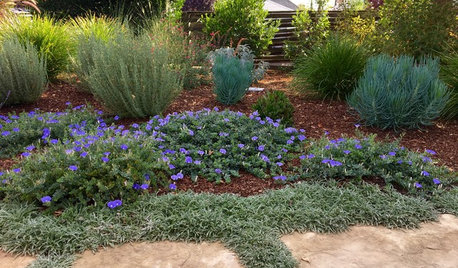
GARDENING GUIDESWhat to Do This Fall to Build Healthy Garden Soil
Take advantage of the cool season to improve soil texture and replenish nutrients
Full Story
GARDENING GUIDESGrow a Beautiful Garden in Alkaline Soil
Got alkaline soil? Learn how to manage it and the many beautiful plants that will thrive in this ‘sweet’ soil
Full Story
GARDENING GUIDESHow to Stop Worrying and Start Loving Clay Soil
Clay has many more benefits than you might imagine
Full Story
GARDENING GUIDESHow to Pick a Mulch — and Why Your Soil Wants It
There's more to topdressing than shredded wood. Learn about mulch types, costs and design considerations here
Full Story
GARDENING GUIDESThe Poop Scoop: Enrich Your Soil With Good Old Manure
Get over the ick factor already — this natural super-ingredient for soil has so many benefits, you'll wonder why you ever went chemical
Full Story
CONTAINER GARDENSContainer Gardening Basics: The Dirt on Soil
Learn the types of potting soil available and the best mixes to help your containers thrive
Full Story
GARDENING GUIDESGardening Solutions for Heavy Clay Soils
What’s a gardener to do with soil that’s easily compacted and has poor drainage? Find out here
Full Story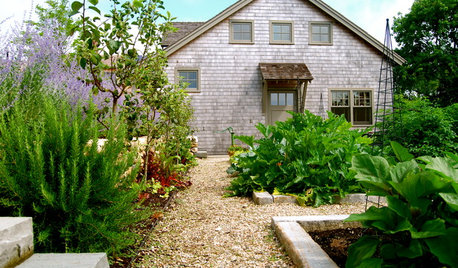
GARDENING GUIDESThe Simple Secret to Gardening Success
Learn the kinds of soil and a DIY type test to make sure you’re putting the right plant in the right place
Full Story
GARDENING GUIDESGarden Myths to Debunk as You Dig This Fall and Rest Over Winter
Termites hate wood mulch, don’t amend soil for trees, avoid gravel in planters — and more nuggets of garden wisdom
Full Story




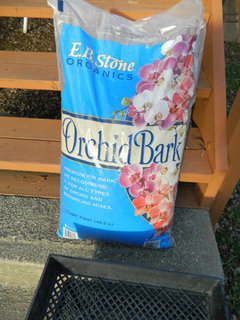
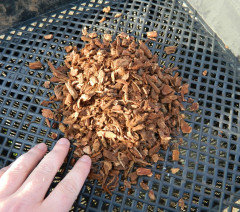
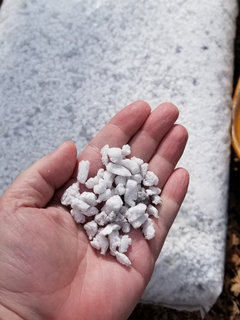
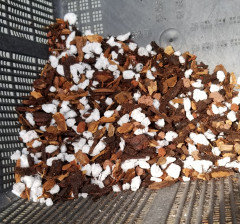
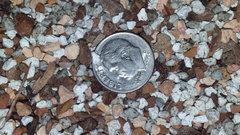

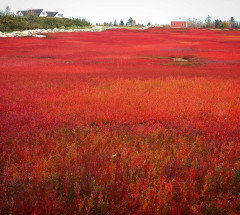

gardengal48 (PNW Z8/9)